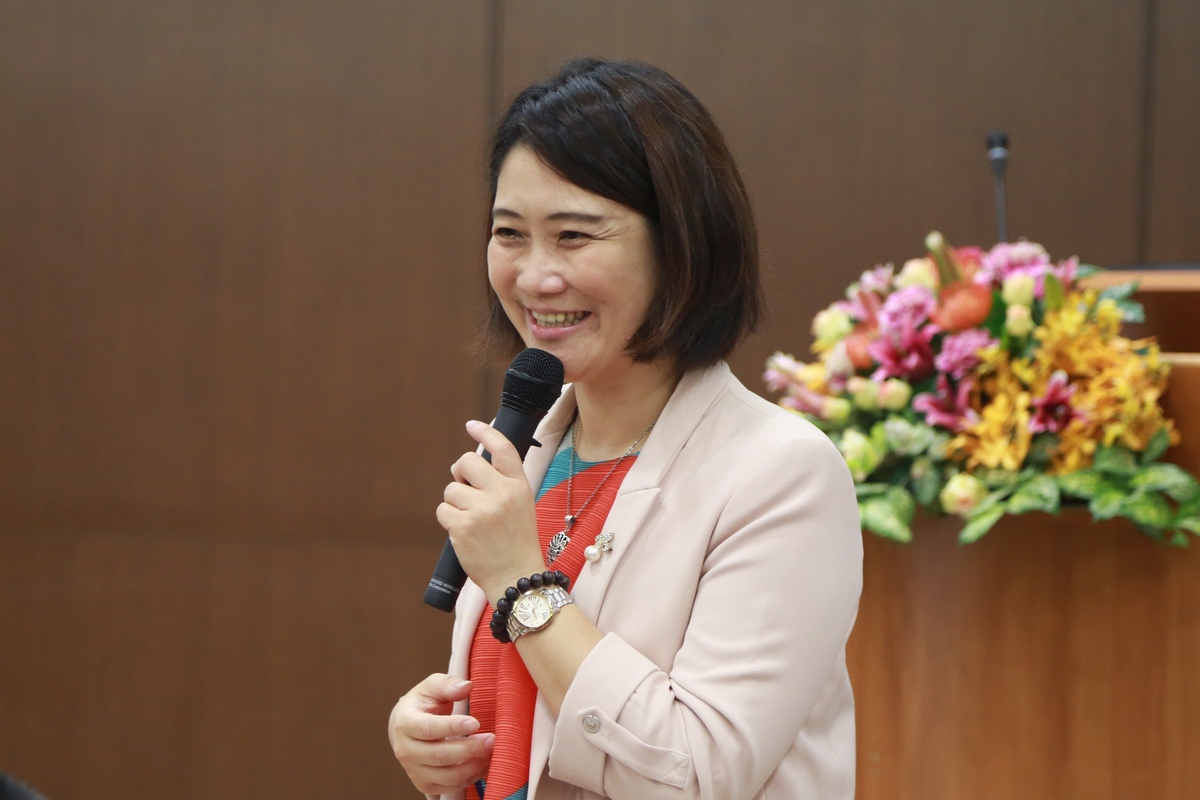High-resolution aerosol VUV photoelectron spectroscopy helps to better understand the properties of aerosols

National Sun Yat-sen University Aerosol Science Research Center – the first center of this kind in Asia, devoted to research on aerosols, their influence on the atmosphere, waters, environment and human health and application of aerosols in biomedicine organized the 1st International Symposium on Aerosols: Characterization and Therapies.
Director of Aerosol Science Research Center and Chair of the Symposium Prof. Chia C. Wang, in her lecture, has emphasized that “air pollution has become the largest environmental risk for health”, significantly surpassing such factors as water pollution and occupational risks, and causing over 6 million of deaths across the globe in just 10 years (2005 - 2015). Prof. Wang emphasized, that air pollution is particularly serious in Asia. The map showed the areas with the most serious pollution are: Indian subcontinent, Eastern Europe, and Central African countries. Particulates such as PM 2.5 do not only cause pulmonary diseases but also pass through to other organs. Besides asthma and COPD, air pollution can cause cancer, cardiovascular diseases, and neurodegenerative diseases.
This is the reason why the Center now concentrates more on the biomedical aspect of aerosol science. Prof. Wang developed a novel aerosol technology – high-resolution aerosol VUV (vacuum ultraviolet) photoelectron spectroscopy, which can be applied to better understand the physical, chemical, biological and optical properties of aerosols. This technology analyzes the surface of the particulates and provides relevant information regarding the valence shell of aerosols. It can be applied to study the valence electronic structure, interfacial solvation properties and surface pH of organic and aqueous aerosols and also, unravel the pH dependence of aerosols. Prof. Wang explained the construction of the aerosol VUV photoelectron spectroscopy apparatus in detail and deliberated on the atmospheric and biological significance of aqueous aerosols.
The 1st International Symposium on Aerosols: Characterization and Therapies, organized by Aerosol Science Research Center at National Sun Yat-sen University, is one of the most important aerosol science-related events in Taiwan. NSYSU also organized an excursion to Meinong and Foguang Buddha Museum for the guests. After the conference, members of ASRC and guests will start an open discussion and visit the campus facilities. The Symposium is a journey through new developments in aerosol science, spreading new knowledge and trying to find a response to the threats, challenges of nowadays and catch the opportunities arising.
Director of Aerosol Science Research Center and Chair of the Symposium Prof. Chia C. Wang, in her lecture, has emphasized that “air pollution has become the largest environmental risk for health”, significantly surpassing such factors as water pollution and occupational risks, and causing over 6 million of deaths across the globe in just 10 years (2005 - 2015). Prof. Wang emphasized, that air pollution is particularly serious in Asia. The map showed the areas with the most serious pollution are: Indian subcontinent, Eastern Europe, and Central African countries. Particulates such as PM 2.5 do not only cause pulmonary diseases but also pass through to other organs. Besides asthma and COPD, air pollution can cause cancer, cardiovascular diseases, and neurodegenerative diseases.
This is the reason why the Center now concentrates more on the biomedical aspect of aerosol science. Prof. Wang developed a novel aerosol technology – high-resolution aerosol VUV (vacuum ultraviolet) photoelectron spectroscopy, which can be applied to better understand the physical, chemical, biological and optical properties of aerosols. This technology analyzes the surface of the particulates and provides relevant information regarding the valence shell of aerosols. It can be applied to study the valence electronic structure, interfacial solvation properties and surface pH of organic and aqueous aerosols and also, unravel the pH dependence of aerosols. Prof. Wang explained the construction of the aerosol VUV photoelectron spectroscopy apparatus in detail and deliberated on the atmospheric and biological significance of aqueous aerosols.
The 1st International Symposium on Aerosols: Characterization and Therapies, organized by Aerosol Science Research Center at National Sun Yat-sen University, is one of the most important aerosol science-related events in Taiwan. NSYSU also organized an excursion to Meinong and Foguang Buddha Museum for the guests. After the conference, members of ASRC and guests will start an open discussion and visit the campus facilities. The Symposium is a journey through new developments in aerosol science, spreading new knowledge and trying to find a response to the threats, challenges of nowadays and catch the opportunities arising.
Click Num:
Share
